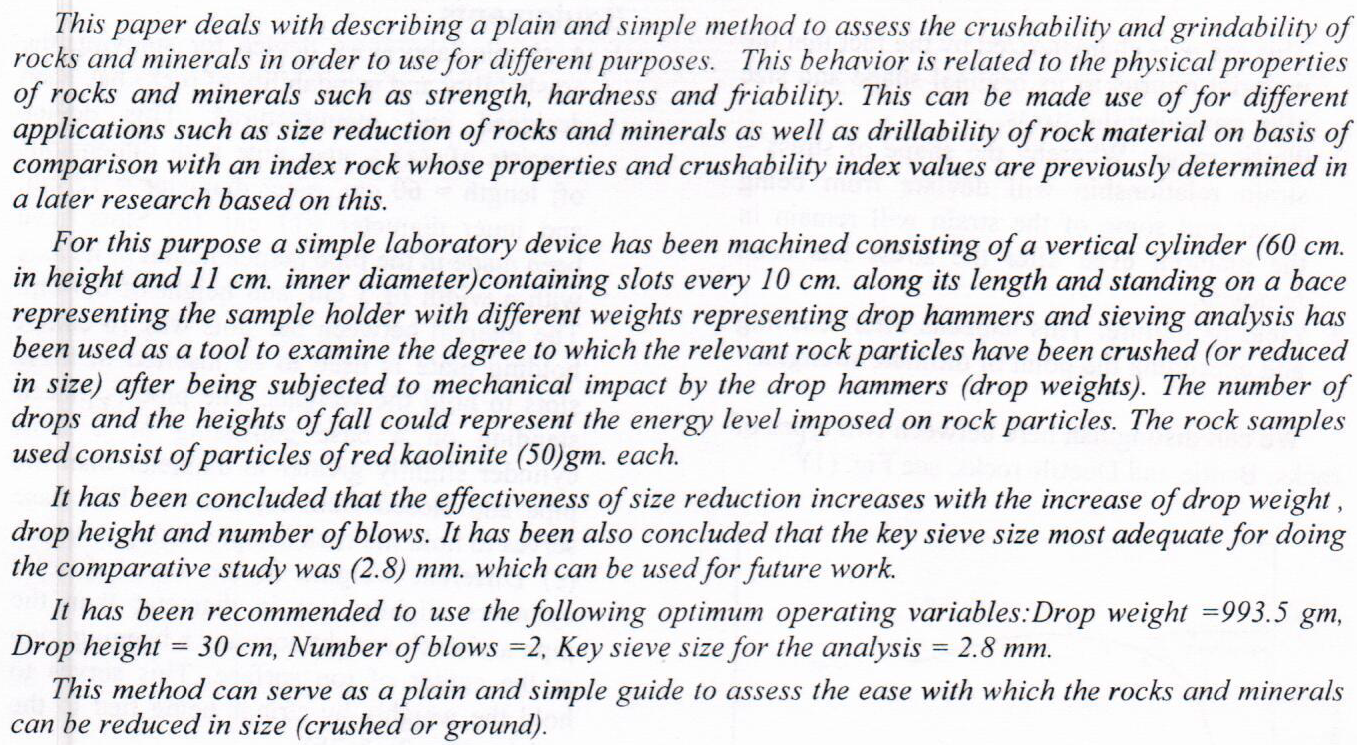
This study focuses for improving the increase the solubility of fiber cellulose in sodium hydroxide solution in concentrations ranging from (4- 12%), from one point of view and from other point of view in (sodium hydroxide and urea) solution concentration (6% NaOH + 4% urea), under low temperature (- 15, - 20 Co) , depending on the principle of reducing the degree of polymerization for fiber cellulose, which is represented in our tests cotton linter who its represent (Whatman filter paper, Grade 1), some samples subjected to chemical pretreatment as simulation the method of decomposition of cellulosic materials by white or brown fungi that grow on trees, this method involves the use of
... Show MoreResearch Summary
The research revolves around the collection of pending hadiths on Abdullah bin Amr bin Al-Aas, may God be pleased with them, and it is required in these hadiths that they be among those in which there is no room for diligence, such as telling about unseen matters, signs of the Hour, or a statement of virtue and reward for obedience, or punishment for disobedience.
The research consists of an introduction, two topics, and a conclusion of the first topic in the translation of Abdullah bin Amr bin Al-Aas, and the second topic, the pending hadiths of Abdullah bin Amr bin Al-Aas, may God be pleased with them, in which there is no room for diligence in collecting and studying
At the end of this rese
In this research, Argon gas was used to generate atmospheric plasma in the manufacture of platinum nanomaterials, to study the resultant plasma spectrum and to calculate the cellular toxicity of those manufactured nanomaterials. This research is keen on the generation of nonthermal atmospheric pressure plasma using aqueous platinum salts (H2PtCl6 6H2O) with different concentrations and exposure of cold plasma with a different time period used to produce platinum nanoparticles, to ensure typical preparation of nanoparticles. Visible UV and X-rays were performed for this purpose, and the diameter of the system probe was (1[Formula: see text]mm) with the Argon gas flow of
... Show More (10)
(10)
 (7)
(7)
 (18)
(18)
We propose a novel strategy to optimize the test suite required for testing both hardware and software in a production line. Here, the strategy is based on two processes: Quality Signing Process and Quality Verification Process, respectively. Unlike earlier work, the proposed strategy is based on integration of black box and white box techniques in order to derive an optimum test suite during the Quality Signing Process. In this case, the generated optimal test suite significantly improves the Quality Verification Process. Considering both processes, the novelty of the proposed strategy is the fact that the optimization and reduction of test suite is performed by selecting only mutant killing test cases from cumulating t-way test ca
... Show More (7)
(7)
The research aim to the usage educational method for jump shooting and it effect on speed strength in basketball for the specialist students in College Sport of Dayla University, which used the following statistic treatment (The T.test for compatible specimens), so after statistic treatment which appears theres a tow moral differences in speed strength and jump shooting tests results to (legs & arms) for the before and after tests, and after that the conclusions we positive and the second the special drills effect immaterial speed strength to legs and arms, so the tow researches recommended to looking after the best for educational methods that used in our sport colleges in Iraq.
The study investigated the behaviour of asphalt concrete mixes for aggregate gradations, according to the Iraqi specification using the Bailey method designed by an Excel spreadsheet. In mixing aggregates with varying gradations (coarse and fine aggregate), The Bailey method is a systematic methodology that offers aggregate interlocking as the backbone of the framework and a controlled gradation to complete the blends. Six types of gradation are used according to the bailey method considered in this study. Two-course prepared Asphalt Concrete Wearing and Asphalt Concrete binder, the Nominal Maximum Aggregate Sizes (NMAS) of the mixtures are 19 and 12.5 mm, respectively. The total number of specimens was 240 for both layers (15 samp
... Show More (3)
(3)
The primary objective of this paper is to improve a biometric authentication and classification model using the ear as a distinct part of the face since it is unchanged with time and unaffected by facial expressions. The proposed model is a new scenario for enhancing ear recognition accuracy via modifying the AdaBoost algorithm to optimize adaptive learning. To overcome the limitation of image illumination, occlusion, and problems of image registration, the Scale-invariant feature transform technique was used to extract features. Various consecutive phases were used to improve classification accuracy. These phases are image acquisition, preprocessing, filtering, smoothing, and feature extraction. To assess the proposed
... Show More (2)
(2)
This paper presents a fully computerized method to backup the router configuration file. The method consists of a friendly graphical interface programmed by Java programming language.
The proposed method is compared with the two existing methods, namely: TFTP server method and Copy/Paste method. The comparison reveals that the proposed method has many advantages over the existing ones. The proposed method has been implemented on Cisco routers (series 2500, 2600 and 2800).
 (25)
(25)
 (22)
(22)
